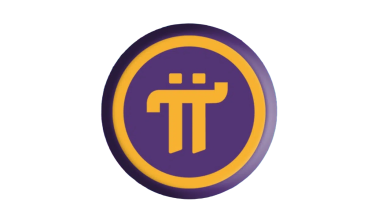AI Has Become My Co-Founder

This article is based on my experience building Linkeme.ai, a platform helping professionals maintain their digital presence through AI-driven content creation and publishing.
I am the CEO & founder of Easylab AI and Linkeme.ai, both of which are referenced in this article.
When people ask me how I built Linkeme.ai, I usually tell them it’s a story about laziness—creative laziness.
Two years ago, I was running a consulting firm in Luxembourg, trying to rebuild my professional life after tragedy. I had sold my telecom company following the loss of both my co-founders—one to COVID, another to cancer—and found myself managing consultants while searching for something meaningful.
The LinkedIn Problem Nobody Talks About
Every B2B consultant knows this truth: maintaining a LinkedIn presence is practically mandatory. Weekly posts. Thought leadership. Engagement metrics. All while actually running your business.
I couldn’t keep up, and frankly, I didn’t want to. It felt like working a second job just to justify the first one.
So I did what any self-respecting technologist would do—I automated it.
My first solution was embarrassingly simple: I scraped industry articles, fed them to GPT to summarize, and used Make.com to format and schedule posts. It was crude but effective. I could “stay active” on LinkedIn while focusing on client work.
But as I refined this automation, something unexpected happened: colleagues started asking how I maintained such consistent posting despite my workload.
When a Hack Becomes a Product
That’s when the true potential clicked. If I needed this, surely thousands of other professionals did too. Not just another AI writing tool, but a comprehensive system that could:
- Absorb a company’s website, documentation, and brand voice
- Generate platform-specific content that actually sounds like you
- Create complete visual assets without design skills
- Publish across multiple networks with zero human intervention
- Learn from engagement to optimize future content
This wasn’t just about automation—it was about solving a real business problem that was costing professionals hours every week.
Building in Public (With AI in Private)
I rebuilt my hacky solution into a proper product I called Linkeme.ai. The first version combined Bolt.new for the interface with Make.com handling the backend orchestration.
Behind the scenes, we implemented:
- GPT-4.1 and Claude models working in tandem for content generation
- Internal ranking algorithms selecting the most on-brand outputs
- Platform-specific formatting engines adjusting for character counts and audience expectations
- An LLM-driven visual composition system creating branded graphics
- Multi-platform publishing flows with error handling and scheduling
The prototype worked well enough that I started inviting beta users. Their feedback validated what I suspected: professionals desperately wanted to maintain their digital presence but lacked the time and creative energy to do it consistently.
The AI Development Breakthrough
For most founders, this is where the story would focus on fundraising or marketing. But what fascinated me most was how we built version 2.0.
We migrated everything to AWS, replacing our patchwork architecture with a serverless system using Lambda and Step Functions. But here’s what made it unique: we developed Cline, an internal tool leveraging LLM agents directly within VS Code.
These AI agents didn’t just help write code—they designed entire workflows. They identified edge cases I hadn’t considered. They refactored inefficient processes before we even deployed them.
In a very real sense, AI wasn’t just building content for Linkeme customers—it was building Linkeme itself.
The Recursive AI Company
Today, Linkeme processes thousands of posts daily across multiple platforms. We’ve grown from a single-founder project to a team with enterprise clients. Our system handles everything from content ideation to performance analytics without human intervention.
What still amazes me is the recursive nature of it all:
- AI helped conceive the product idea by solving my personal problem
- AI designed the technical architecture and workflows
- AI wrote significant portions of our codebase
- AI generates the content our customers publish
- AI analyzes performance data to improve future outputs
This wasn’t “AI-assisted development.” This was AI as a fundamental co-creator—something closer to a co-founder than a tool.
The Future of AI-Native Companies
What I’ve learned from building Linkeme is that we’re entering an era of truly AI-native companies. Not businesses that merely implement AI features, but organizations where AI shapes the very process of building the business itself.
For entrepreneurs, this represents a profound shift. The question isn’t just “what can AI do for my customers?” but “how can AI transform how I build, operate, and scale my company?”
The old approach treated AI as a product feature. The new approach sees AI as a partner in the entire business creation process—from ideation to execution.
And perhaps the most surprising lesson? It all started because I was too lazy to write LinkedIn posts.





